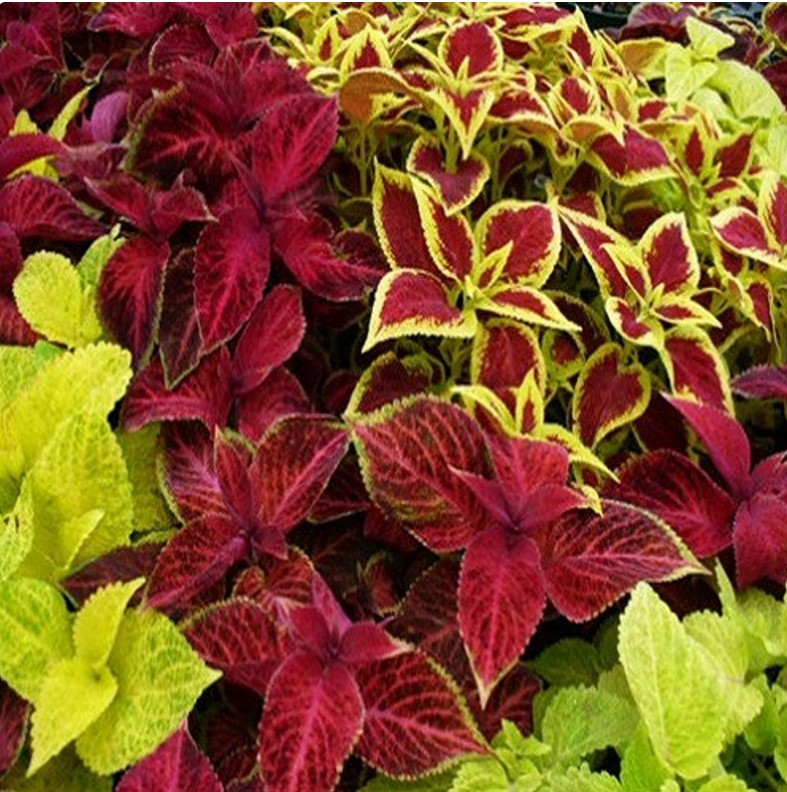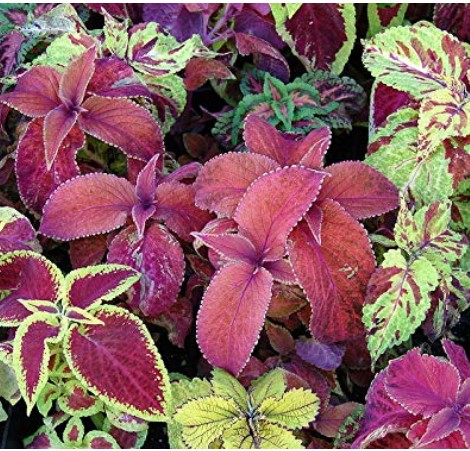Coleus ‘Rainbow Mix’
Solenostemon scutellarioides ‘Rainbow Mix’


Characteristics
- Type: Annual
- Zone: 10 – 11
- Height: 6 to 36 Inches
- Spread: 6 to 36 Inches
- Flowers: Not Showy
- Bloom Description: Blue to White
- Sun: Part Shade – Full Shade
- Water: Medium
- Maintenance: Low
Culture
Coleus ‘Rainbow Mix’ is winter hardy to USDA Zones 10-11. In other areas, grow as garden annuals or in pots that can be overwintered indoors or as houseplants. Grow in moist, organically rich, loose soils in part shade. Coleus is perfect for the shady garden, and it is a good indoor or outdoor container plant. Tolerates full shade. Soils must not be allowed to dry out. Remove flower spikes as they appear. Pinch plant stem tips to keep plants compact and to promote bushiness. ‘Rainbow Mix’ has solid or bi-colored leaves in shades of red, green, yellow, maroon and pink.
Noteworthy Characteristics
Plectranthus scutellarioides, commonly known as coleus, is a tropical evergreen tender perennial that has been a popular foliage plant since at least Victorian times. It is native to Southeast Asia and Malaysia. It has been assiduously hybridized over the years into a very large number of vegetatively propagated and seed propagated strains with an almost infinite number of leaf color combinations including most colors of the spectrum except true blue. Cultivars range in size from dwarf 6” tall plants to large mounded 36” tall plants. Four-sided stems are semi-succulent. Showy multi-colored leaves are generally ovate to oblong and toothed. Leaves frequently feature mixtures of colors in irregular patterns. Blue to white nettle-like flowers (more common on seed strains) bloom in racemes in summer to early fall, but are not showy and tend to visually detract from the symmetry and attractiveness of the plants.
Problems
No serious insect or disease problems. Watch for aphids, spider mites and whiteflies, particularly on indoor plants. Plants grown in too much sun may wilt. Plants grown in too much shade may become leggy.
Garden Uses
Group or mass as garden annuals in beds and borders. Pots, containers, window boxes, hanging baskets. Houseplants.
Courtesy of Missouri Botanical Society Plant Finder